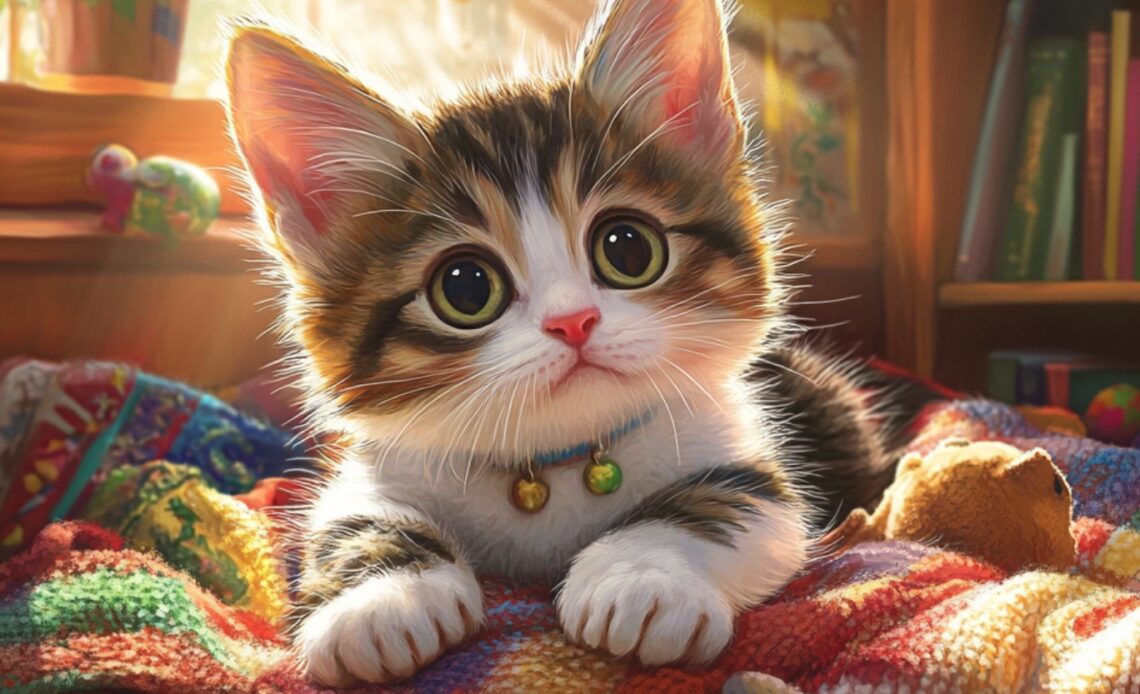
The term “pussycat” conjures images of soft, furry companions, evoking feelings of warmth and affection. Yet, the history of this term is rich and layered, reflecting cultural shifts, linguistic evolution, and the evolving relationship between humans and their feline friends. Understanding why cats are called “pussycats” requires delving into the origins of the word and exploring its significance across different eras and contexts.
The Etymology of “Pussy”
The word “pussy” has an intriguing etymological background that stretches back centuries. One of the prevailing theories suggests that “pussy” is derived from the French word “poussin,” meaning “baby” or “young one.” In this context, it is often associated with small animals, particularly kittens. This connection indicates that the use of “pussy” was originally intended as a term of endearment, emphasizing the tender and nurturing qualities associated with young animals.
Additionally, the Dutch word “poes,” which also refers to a cat, plays a significant role in the history of the term. As trade and cultural exchanges flourished across Europe, linguistic influences intermingled, leading to the adoption of “poes” into English. This gradual integration exemplifies how language evolves, shaped by the societies that use it. The melding of these linguistic roots reflects a universal admiration for felines, illustrating the timeless nature of our affection for these enigmatic creatures.
The Evolution of “Pussycat”
The term “pussycat” represents a linguistic fusion that captures both the gentleness associated with “pussy” and the straightforward identification of “cat.” Historical documents from the late 17th century reveal that “pussycat” began to appear in English literature, marking its transition from a colloquial term to a recognized component of the English lexicon.
Prominent literary figures, including poets and playwrights, embraced “pussycat” as a charming way to express fondness for felines. This usage not only reinforced the affectionate connotation of the term but also underscored the cultural significance of cats during that period. The late 17th and early 18th centuries were characterized by a growing interest in domesticity and the role of pets within the household, further embedding “pussycat” into popular vernacular.
Cats in Victorian Society
The Victorian era, known for its emphasis on family and domestic life, saw a surge in the popularity of cats as beloved pets. The term “pussycat” became emblematic of this trend, signifying a pet that was cherished and spoiled. This period also witnessed the rise of cat shows and the selective breeding of various feline breeds, further enhancing the status of cats in society.
Within the context of Victorian culture, the notion of a “pussycat” was often intertwined with ideals of femininity and domestic tranquility. Cats were frequently depicted in art and literature as gentle creatures that embodied grace and elegance. The affectionate label served to reinforce the image of cats as companions who brought comfort and solace to their human counterparts.
Cultural Significance of the Term
The cultural significance of “pussycat” extends beyond its literal interpretation. It has permeated literature, folklore, and popular culture, evolving into a term that conveys warmth and familiarity. In nursery rhymes and children’s stories, cats are often personified as playful, mischievous characters, further endearing them to young audiences. The whimsical nature of “pussycat” enhances its appeal, ensuring that it remains a beloved term across generations.
In addition to its presence in children’s literature, the term has made notable appearances in songs, films, and various forms of media. For instance, the popular phrase “pussycat, pussycat, where have you been?” from the nursery rhyme captures the playful and adventurous spirit associated with cats. This cultural resonance emphasizes how the term has been woven into the fabric of everyday language, symbolizing the bond between humans and their feline companions.
The Modern Usage of “Pussycat”
In contemporary society, “pussycat” continues to be a widely recognized term, reflecting a blend of affection and familiarity. While the term retains its playful connotation, it has also taken on new dimensions in various contexts. The rise of social media and the internet has facilitated the proliferation of cat-related content, leading to a renewed fascination with cats and their charming antics.
Platforms like Instagram and TikTok have given rise to a plethora of feline influencers, with cat owners sharing images and videos of their beloved pets. The term “pussycat” is frequently used in hashtags, captions, and memes, demonstrating its enduring relevance in modern culture. As more individuals share their experiences with cats online, the affectionate term persists, connecting people through their shared love for these captivating creatures.
Conclusion
The term “pussycats” encapsulates a profound connection that transcends time, culture, and language. Its evolution from early etymological roots to contemporary usage reflects the deep-seated affection humans have for cats. By tracing the origins and cultural significance of “pussycat,” one can appreciate the enduring bond between humans and felines.
In a world where cats continue to capture our hearts and imaginations, the term “pussycat” serves as a gentle reminder of the comfort, companionship, and joy that these remarkable animals bring to our lives. Whether they are curled up in our laps or playfully darting around the house, the “pussycats” in our lives remain cherished companions, deserving of a term that encapsulates the warmth of our affection for them.

